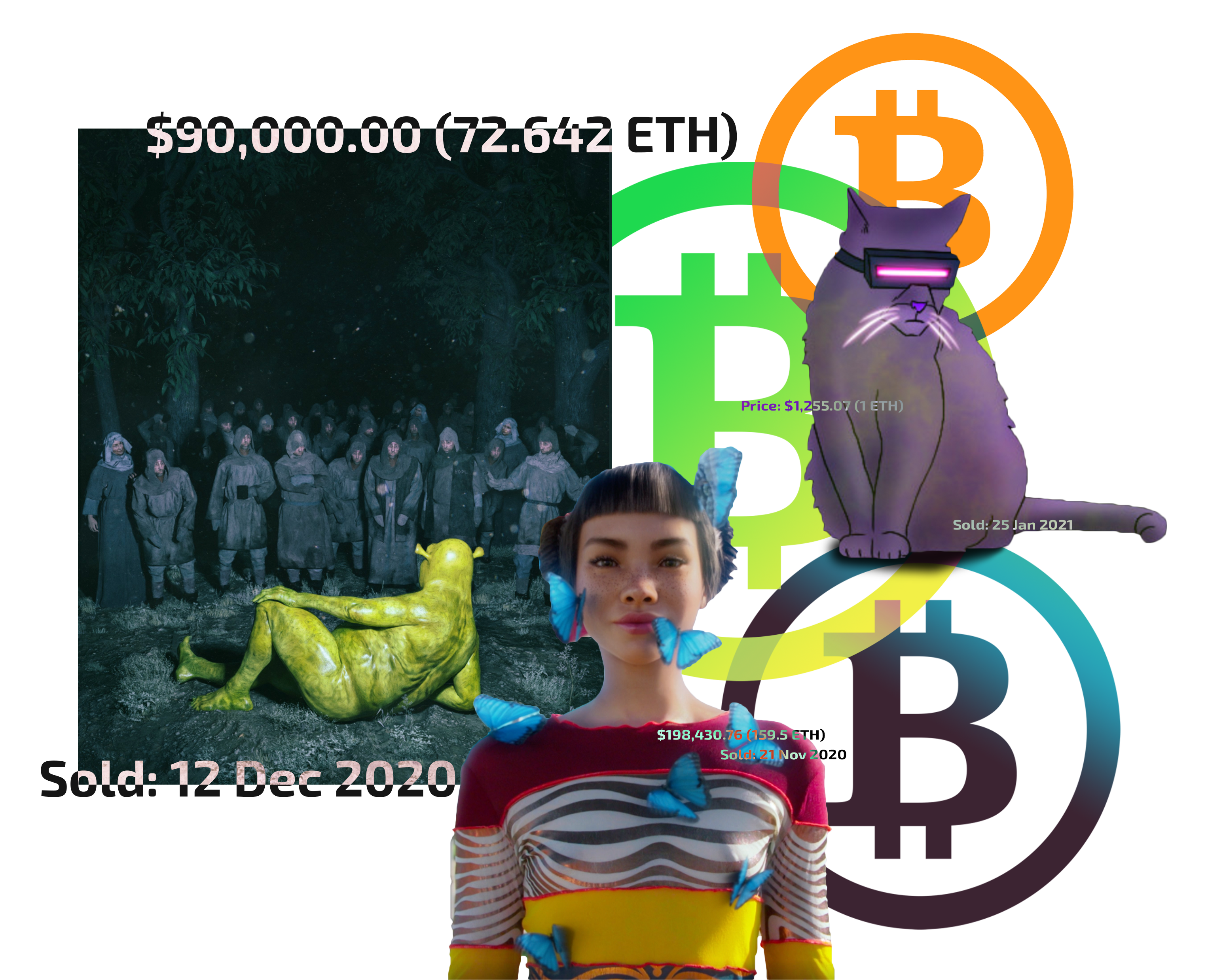How lucrative the rare pepe-making market is becoming
In November 2017, Leonardo da Vinci’s Salvator Mundi was sold at Christie’s, the biggest auction house in the world, for US$450.3 million. In October 2020, Satoshi Nakamoto’s Block 21 was sold at Christie’s for $131,250.
The former is the most expensive piece of art in the world. The second is the first piece of crypto art to ever be sold at a major auction house.
Cryptocurrencies have been having their moment for a while, with the 2018 Bitcoin mania (which, by the way, was created by the person under the alias of Satoshi Nakamoto) and the recent rumours that it could replace paper money once central banks inevitably crash due to the pandemic. And because, of course, it wouldn’t be the internet without the idiosyncratic evolution of an underground subculture, there’s now also an increasing presence of crypto art in the crypto community.
I hear you asking: “What the hell is crypto art?”
Crypto art is a new movement that allows people to create digital art while guaranteeing official ownership of the piece with what crypto fiends call an NFT.
NFT stands for Non-Fungible Token, which means something that is certified unique; it’s irreplaceable, which gives it a certain amount of intrinsic value. Since most online art can be replicated à volonté by just about anyone, making a piece of digital art an NFT, where the copyrights and ownership details would be stored on a cryptocurrency’s blockchain, would give it the same amount of rarity as a physical piece of art like da Vinci’s Salvator Mundi.
The art can still be replicated, but only the person who has the token — the artist’s cyber signature on the piece, essentially — really owns it.
NFTs can have many forms. They can be specific pieces of artwork just like they can be collectible characters and games, like CryptoPunks — a bunch of punk characters that you can buy using Ether, a cryptocurrency— and CryptoKitties, which is kind of like Nintendogs, but with a digital cat that has a unique NFT genetic code and that you can breed with other cats to make another unique kitty.
Another use for crypto art is what is called cold storage: some crypto art pieces are available as physical prints that feature a QR code, which Bitcoin users can then use to store their Bitcoin outside their crypto wallet. Since they’re transferring funds onto a physical, two-dimensional object — which therefore can’t be hacked into — the art print then acts like a safety deposit box at a bank.
For the most part, crypto artworks can run anywhere from $50 to $500,000. But it’s difficult to follow the value of these pieces because the value of cryptocurrencies changes so much, and there are so many sources claiming different values for the most expensive pieces of crypto art.
So far, a crypto photo of a rose, sold for $1 million, is said to be the most expensive piece of crypto art out there. As a fast-paced business, it’s estimated the crypto art market is worth well over $128 million, and it expanded by $8.2 million in December 2020 alone.
Some are seeing this as a counterculture movement against the traditional art world, which has come to embody elitism and luxury. Where museums, art buyers, and the like are deciding which types of art and which artists will be put under the spotlight, the internet is able to democratize the industry and give small artists the support and recognition they deserve. The web is also home to a wealth of different styles and themes of art.
Now crypto art is all fun and games, but this is the internet we’re talking about, and on the internet people just have to make things weird. Enter the Rare Pepe Directory.
The Directory is a panel of “experts” who work to verify and approve user-submitted Rare Pepe artworks (which act and look similar to trading cards). They have a list of specific criteria to consider any submission, like dimension specifications and how many shares it must have had, to confirm the Pepe before their eyes is indeed rare. If approved, the new Pepe can then be bought and traded as an NFT.
As far as I know, there aren’t really any practical uses to crypto art. But the concept has been questioned by many as just another way for internet users to launder money more effectively. After all, the world of fine art is already used as a way to clean dirty money and tax evade through under-the-table payments and over appraisals; creating an art industry based on decentralized, anonymous payments seems like an obvious next step for the elite of the blockchain.
The rise in popularity and value of intangible art starts an important conversation about the reasons why we care about art in the first place. Salvator Mundi’s exorbitant price denotes the scarcity of original Leonardo da Vinci pieces, but what difference does it make when it’s possible to scrutinize the piece and enjoy it just as much as a JPEG file? Are we about to see higher and higher price records from digital pieces?
Most importantly, crypto art, as a prediction of what the future of art looks like, is an indicator that the barriers of entry to the art world have reached a tipping point. Just as we’re seeing in the rest of the digital world, the 99 per cent is taking art back from those who have capitalized on its captivity.
Photo collage by Kit Mergaert
